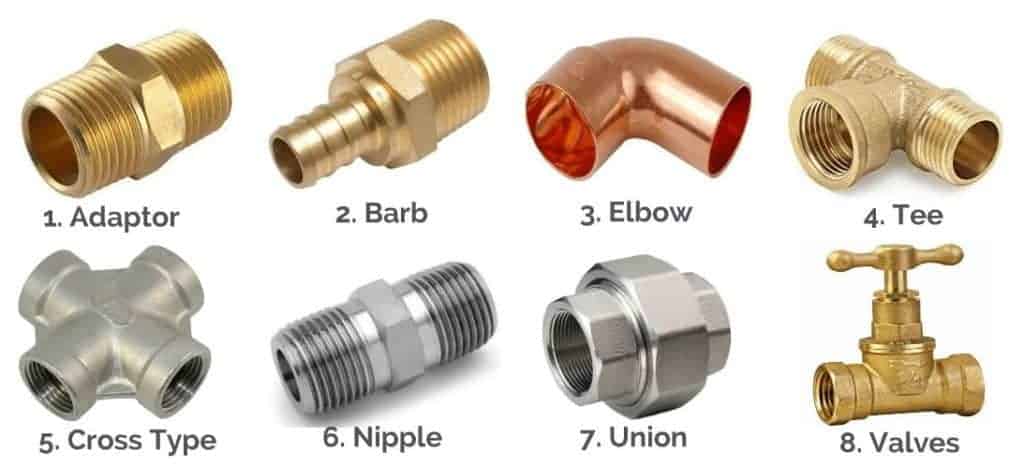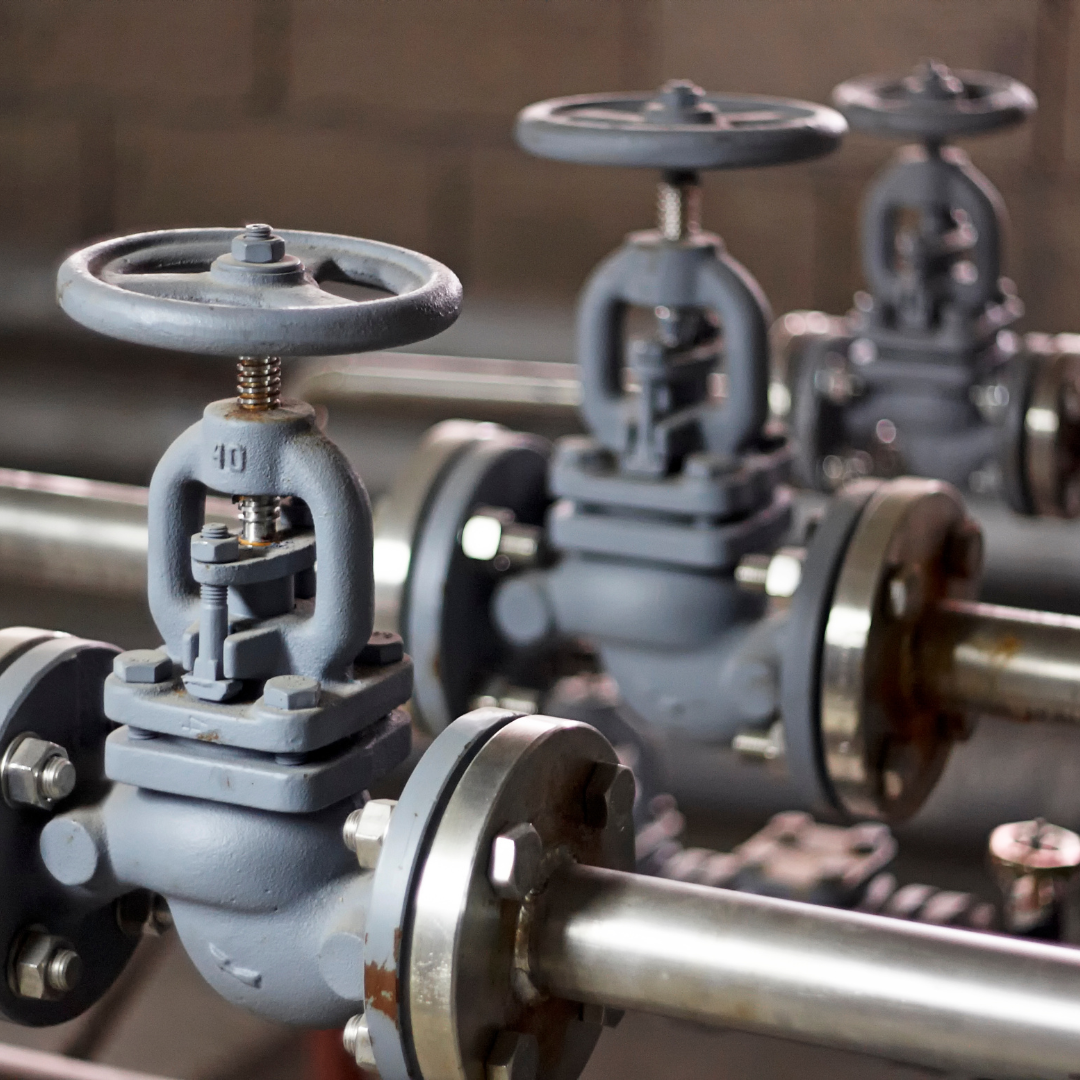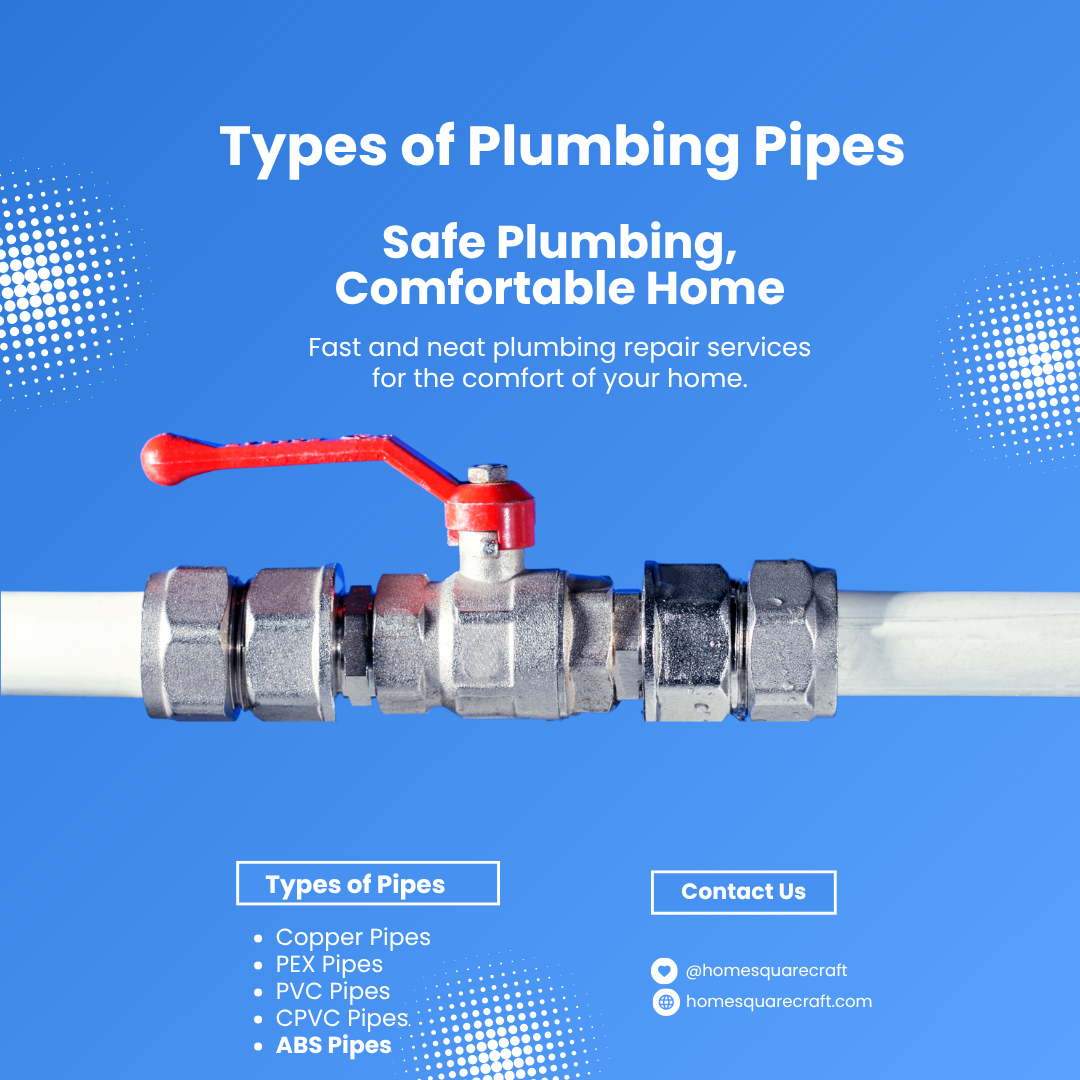Different Types of Pipe Fittings in Plumbing Systems
Types of Plumbing Fittings: The Comprehensive Guide to Your Home’s Lifeblood
Plumbing—it’s the unsung hero of modern living. We often take it for granted until a leak springs or a drain clogs. At the heart of every effective and leak-free plumbing system lies a complex network of pipes held together by small but mighty components: plumbing fittings.
These seemingly simple connectors are the backbone of any water supply, heating, or drain-waste-vent (DWV) system. They allow pipes to change direction, connect different sizes, branch off, and terminate, ensuring the seamless and safe flow of water and waste throughout a building.
For the DIY homeowner, professional contractor, or even the simply curious, understanding the different types of plumbing fittings is crucial. This comprehensive guide will dissect the world of plumbing fittings, categorizing them by their function, connection method, and common materials.

I. Fittings by Function: Directing the Flow
The primary role of a fitting is to manipulate the flow within a pipeline. Whether you need to turn a corner, join pipes in a straight line, or branch off, there’s a specific fitting for the job.
-
Direction Changers
These fittings are essential for navigating the inevitable corners and obstacles in a building’s structure.
- Elbows (or “Ells”): The most common direction-changing fitting.
- Purpose: To change the direction of the pipe run.
- Common Angles: Available most commonly in 90-degree and 45-degree bends. Less common angles like 22.5∘ or 60∘ are also used.
- Types:
- Standard Elbow: Connects two pipes of the same diameter.
- Reducing Elbow: Connects pipes of different diameters.
- Street Elbow: Features a male thread on one end and a female thread on the other, eliminating the need for a separate short connector (nipple).
- Radius: Long-radius (smooth turn for low friction, common in DWV) or short-radius (tighter turn, common in pressure systems).
- Bends: Similar to elbows but offering a gentler, more gradual change in direction, which minimizes pressure drop and turbulence, particularly in larger or gravity-fed systems.
-
Connectors and Joiners
These fittings are used to link pipe sections together, either permanently or temporarily.
- Couplings:
- Purpose: To join two pipe sections in a straight line.
- Types:
- Standard Coupling: Joins two pipes of the same size and material.
- Reducing Coupling (or Bell Reducer): Joins two pipes of different diameters.
- Slip Coupling: A slightly longer coupling with no internal stop, allowing it to slide over one pipe end and then be centered over the break for quick repair of a damaged section.
- Unions:
- Purpose: To join two pipes that may need to be disconnected frequently for maintenance or replacement. They are similar to couplings but are non-permanent.
- Structure: Consist of three parts—a male end, a female end, and a nut that draws them together to form a tight, mechanical seal. This unique design allows connection without having to turn the pipes themselves.
- Adapters:
- Purpose: To connect two different types of pipes, either by material, size, or connection type.
- Example: A sweat adapter (for soldered copper) that transitions to a male or female pipe thread (for connection to a valve or appliance).
- Nipples:
- Purpose: A short, straight piece of pipe with male threads on both ends, used to connect two female-threaded fittings or pipes.
- Types: Close nipples are fully threaded, while hex nipples have a six-sided section in the middle for a wrench grip.

-
Branch and Diversion Fittings
These fittings allow a single pipe run to split into multiple lines.
- Tees:
- Purpose: To split or combine flow from three pipe runs, forming a ‘T’ shape with a 90∘ branch.
- Types:
- Straight Tee: All three openings have the same diameter.
- Reducing Tee: The branch opening is smaller than the main run.
- Sanitary Tee: Features a slightly curved branch to ensure smooth wastewater flow and is used only for vertical drainage.
- Wyes:
- Purpose: To join or split two lines at a 45∘ angle, forming a ‘Y’ shape.
- Function: They are critical in DWV (Drain-Waste-Vent) systems because the gentle angle reduces turbulence and helps maintain the smooth, gravity-assisted flow of waste, reducing the risk of clogs.
- Crosses:
- Purpose: To connect four pipes at a central intersection, often with one inlet and three outlets.
- Application: More common in fire sprinkler systems or industrial applications, as the four-way junction can create high stress on the piping.
-
Size Changers
Used to manage pipe diameter within a run.
- Reducers:
- Purpose: To transition from a larger pipe size to a smaller one.
- Types:
- Concentric Reducer: Cone-shaped, maintaining a centered alignment. Often used for gas piping and vertical runs.
- Eccentric Reducer: Flat on one side, typically the bottom, to prevent air traps or accumulation of solids. Essential for horizontal runs.
- Bushings:
- Purpose: A compact alternative to a reducing coupling, used to connect pipes of different sizes.
- Structure: They often feature male threads on the outside (fitting into a larger female fitting) and female threads on the inside (receiving the smaller pipe). They offer an abrupt size change in a small space.
-
End Closures
These fittings are used to seal the end of a line.
- Caps:
- Purpose: To permanently or temporarily seal the end of a pipe.
- Fit: Fits over the outside of the pipe end (female-threaded).
- Plugs:
- Purpose: To seal an unused port or cleanout on a fitting.
- Fit: Fits inside a pipe or fitting opening (male-threaded).
- Clean-Outs:
- Purpose: Not a simple closure, but a capped access point in a DWV line (often a tee or wye) that allows plumbers to snake a drain and clear blockages.
II. Fittings by Connection Method: The Seal
How a fitting joins to a pipe is a critical factor, determining its reliability, ease of installation, and suitability for high-pressure or high-temperature applications.
-
Threaded Fittings
- How it Works: Connection is made by screwing together male (external) and female (internal) tapered threads.
- Sealing: Requires a sealant like PTFE (Teflon) tape or pipe dope to ensure a leak-proof connection.
- Materials: Common with galvanized steel, black iron (for gas lines), brass, and some PVC/CPVC.
- Pros/Cons: Easy to assemble and disassemble, but can be labor-intensive to seal properly and are not always suitable for high-vibration systems.
-
Solvent-Weld Fittings
- How it Works: A chemical solvent (glue/cement) is applied to the fitting and the pipe, temporarily softening the plastic. The parts are joined, and as the solvent evaporates, the pipe and fitting chemically fuse together, creating a solid, permanent bond (known as solvent welding).
- Materials: Used exclusively with plastic pipes like PVC (for cold water supply and DWV) and CPVC (for hot and cold water supply).
- Pros/Cons: Highly reliable, permanent, and relatively inexpensive, but disassembly requires cutting the pipe.
-
Solder/Brazed Fittings
- How it Works: The pipe is inserted into the fitting socket. A heat source (torch) is used to heat the joint, drawing molten solder (for water lines) or brazing alloy (for high-pressure gas or refrigeration) into the gap via capillary action, creating a permanent, watertight seal.
- Materials: Used with Copper piping.
- Pros/Cons: Extremely durable, heat-tolerant, and reliable for water supply lines, but requires high heat, flux, and specialized skill.
-
Mechanical/Compression Fittings
These rely on mechanical force rather than heat or chemicals to create a seal.
- Compression Fittings:
- How it Works: A nut, a compression ring (ferrule), and the fitting body create the connection. As the nut is tightened, it compresses the ferrule against the pipe and into the fitting, forming a watertight seal.
- Application: Used for small-diameter pipe, like in faucets, toilets, and appliance connections. Easy to install and disconnect.
- Push-to-Connect Fittings (e.g., SharkBite):
- How it Works: The pipe is simply pushed into the fitting. Internal components—a metal ring for grip and an O-ring for the seal—lock the pipe in place instantly.
- Application: Excellent for quick repairs and connecting dissimilar pipe materials (PEX, copper, CPVC) without tools, soldering, or glue. Best used in accessible areas.
- Crimp and Expansion Fittings (for PEX):
- How it Works: PEX pipe is secured by either a copper crimp ring (compressed with a special tool) or by an expansion ring (stretched with a special tool and allowed to shrink back onto the fitting).
- Application: The standard for connecting flexible PEX (Cross-linked Polyethylene) tubing. Highly durable and less prone to leaks than many other methods.
- Flanges:
- How it Works: Flat, circular discs welded or threaded onto the pipe ends, sealed together with a gasket and bolts.
- Application: Used for high-pressure systems, large pipe diameters, or where heavy equipment (like pumps or water heaters) needs to be connected to the main line.
» Valves
Valves regulate or stop fluid flow. Popular types include:
- Ball valves
- Gate valves
- Globe valves
- Check valves (allow flow in only one direction)
Valves are critical for controlling a plumbing system effectively.
» Cross Fittings
Cross fittings have one inlet and three outlets (or vice versa) forming a cross. They connect four pipes, usually used in specialized industrial piping rather than residential plumbing.
» Nipples
Nipples are short lengths of pipe with male threaded ends used to connect two female threaded fittings. They are useful for extension or adaptation in tight spaces.
» Flanges
Flanges are flat, round fittings bolted together with a gasket to form strong, sealed pipe joints. They are often used in heavy-duty piping systems or where pipes pass through walls or floors.
» Trap Fittings
Traps are used commonly beneath sinks and toilets. They are P or U-shaped to hold water, preventing sewer gases from entering the building while allowing waste to pass through.
» Olets
Olets (Weldolet, Sockolet, Thredolet) are used to create a branch connection on a larger pipe and are typically welded or threaded to the main pipe. They create strong, smooth transitions for branched connections.
Several types of olets are used in plumbing tasks:
- Butt-Weld Olet
- Socket Weld Olet
- Elbow Olet
- Nipple Olet,
- Lateral Olet
- Flange Olet
- Sweep olet and
- Threaded Olet
III. Fittings by Material: Choosing the Right Stuff
The material of the fitting must be compatible with the pipe material and the fluid flowing through it.
-
Plastics
- PVC (Polyvinyl Chloride): White plastic, highly popular, corrosion-resistant, and inexpensive. Used mainly for cold water supply and DWV systems. Not rated for hot water.
- CPVC (Chlorinated Polyvinyl Chloride): Off-white/yellowish plastic. Similar to PVC but rated to handle higher temperatures, making it suitable for both hot and cold water supply lines.
- ABS (Acrylonitrile Butadiene Styrene): Black plastic. Used exclusively for DWV systems. It is lightweight, durable, and installed with a single-step solvent cement.
-
Metals
- Copper: Highly durable, corrosion-resistant, and withstands high temperatures. Often joined by soldering. Excellent for water supply lines.
- Brass: An alloy of copper and zinc. Highly durable, rust-resistant, and commonly used for threaded fittings, valves, and specialized components due to its machinability and potable water safety.
- Galvanized Steel: Steel coated in zinc to resist rust. Once popular, but now prone to corrosion over time, which can reduce water flow. Still used for some commercial or older residential repairs.
- Black Iron: Non-galvanized steel fittings used primarily for natural gas and propane lines, as well as fire sprinkler systems.
IV. The Importance of the Right Choice
The world of plumbing fittings is a universe of specialized components, each designed with a specific purpose, material, and connection method.
Choosing the correct fitting is not just about connecting two pipes; it’s about:
- System Compatibility: Ensuring the fitting material and connection type are suitable for the pipe material (e.g., copper to copper, PVC to PVC) to prevent galvanic corrosion or weak bonds.
- Pressure and Temperature: Confirming the fitting is rated for the system’s operating pressure and temperature (e.g., CPVC for hot water, PEX for flexible supply).
- Application: Using the correct shape for the function (e.g., a wye for a horizontal drain line, an elbow for a corner in a water supply line).
From the common 90-degree elbow that turns the water into your kitchen to the specialized union that allows easy disconnection for appliance maintenance, plumbing fittings are the indispensable pieces of the puzzle that make every modern water and waste system function flawlessly. Understanding these components is the first step toward a well-maintained, efficient, and leak-free home.
How To Choose Plumbing Fittings?
When choosing plumbing fittings, consider:
- Material compatibility with pipes and fluid being transported.
- Pressure ratings for the system.
- Flow direction and volume to avoid turbulence.
- Ease of installation and maintenance.
Different systems (water supply, sewage, gas) require different fittings and materials for safety and durability.
Conclusion
Understanding plumbing fittings is essential for efficient plumbing system design and maintenance. From elbows changing flow directions to valves regulating liquids, each fitting has a specific role in ensuring leak-free and functional plumbing infrastructure. Selecting the right fitting type and material greatly contributes to system longevity and performance.



